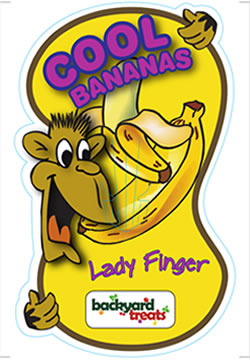Banana SelectionMusa Sapentum  |
BananaWe have a wide variety of bananas available through our Backyard Treats range, all with their own shapes, flavours and other characteristics. It may take 2 or 3 years for the first fruit to be produced but after the fruit has been harvested the main stem should be cut down. The retained sucker will replace it as the main stem and the process is continued indefinitely or until the plant has moved so far from its original position that it has to be replanted. Remove dead leaves regularly. Bananas require deep, rich soil which is well-drained, in a position which is in full sun for most of the day. A position close to a north facing wall is ideal. They require protection from cold winds and frost. The fruit is ready to be harvested once the bananas lose their ridges, become more rounded, and when the black withered remains of the flowers at the end of the bananas are dry and crumbly. Cavendish
Cavendish Dwarf
Lady Finger
Pisang Ceylan
Dwarf Red Dacca
Biosecurity Zones If you purchase one of our plants, please be aware that this plant must not be moved outside its biosecurity zone. Queensland has several biosecurity zones for different pests and diseases. You need to know the boundaries of the zones to know whether you are affected by the zone restrictions. |
|
